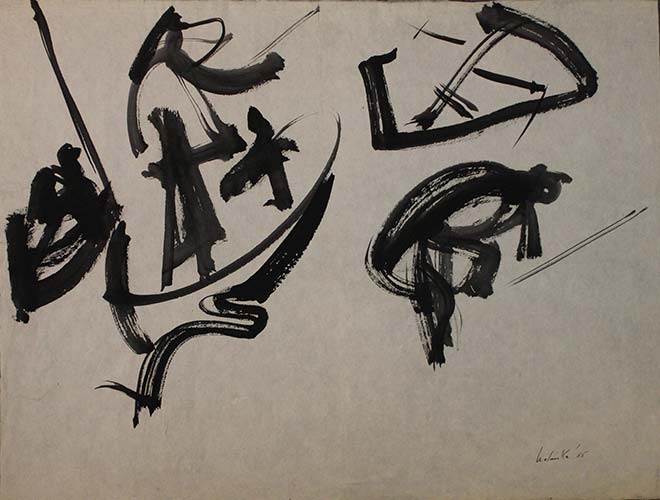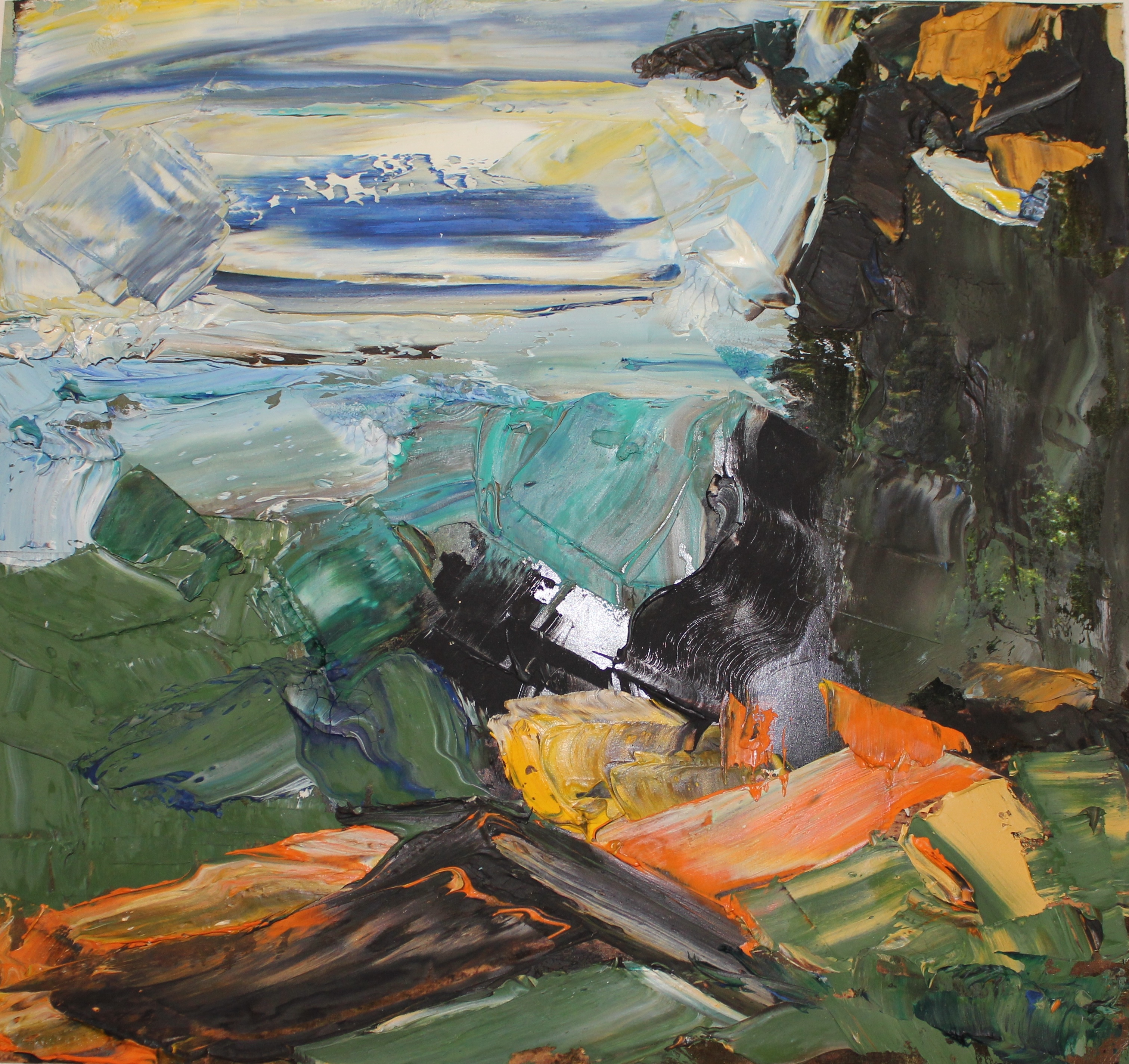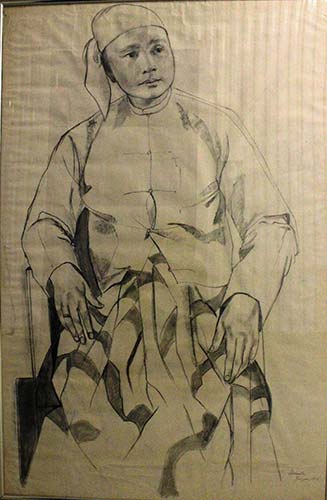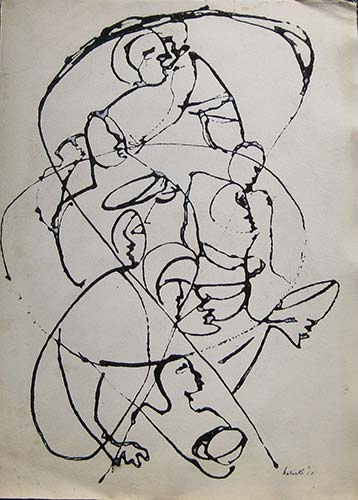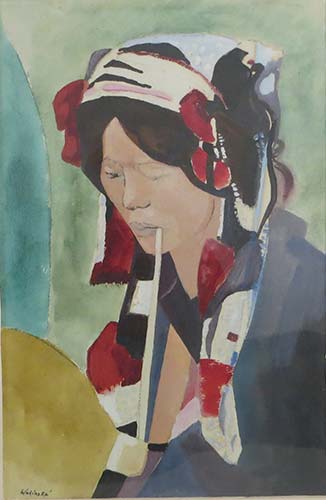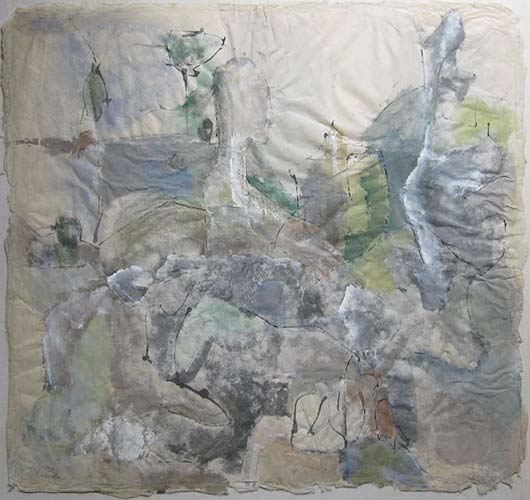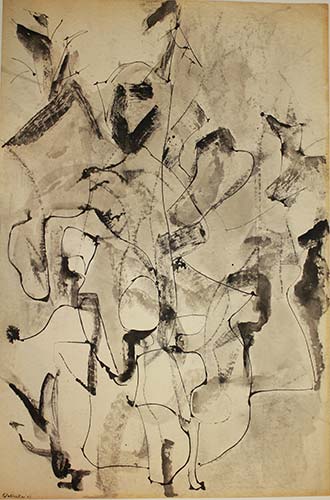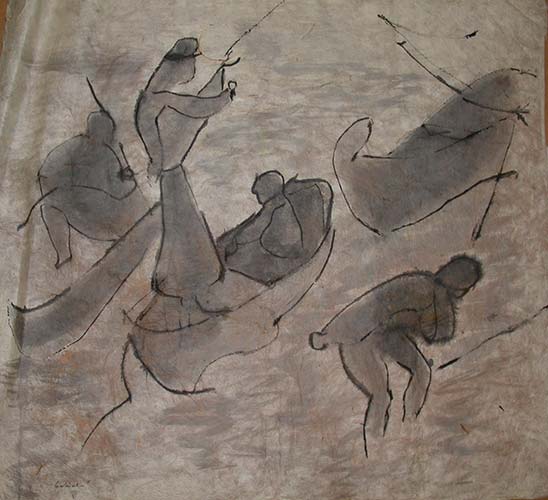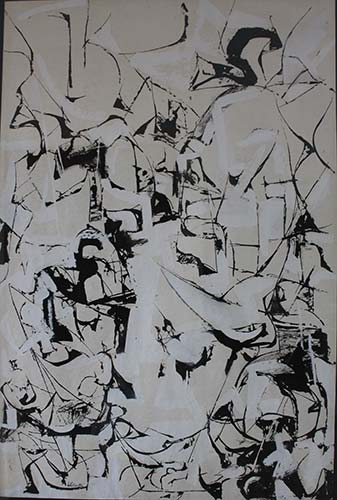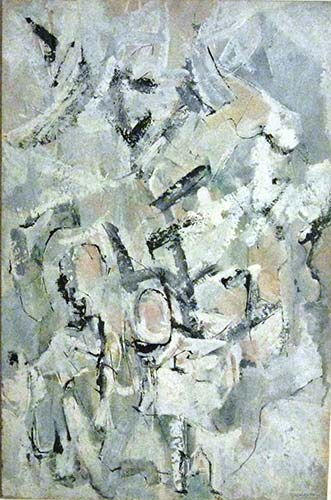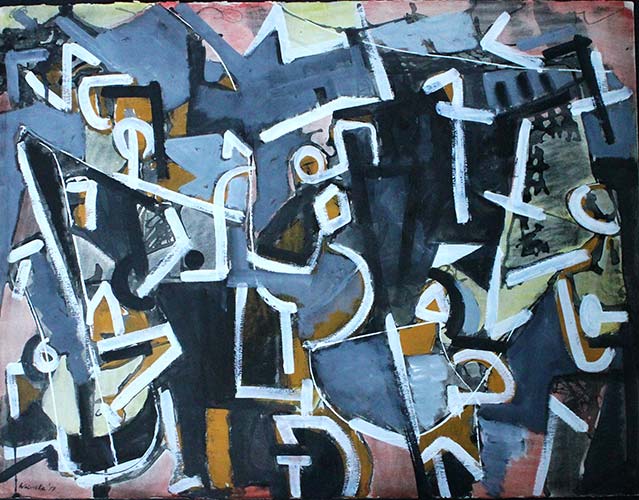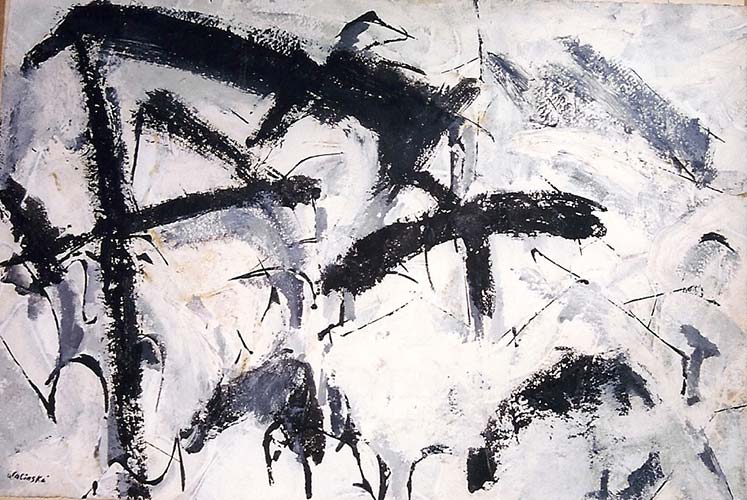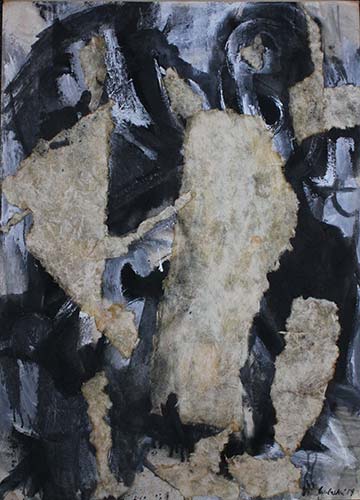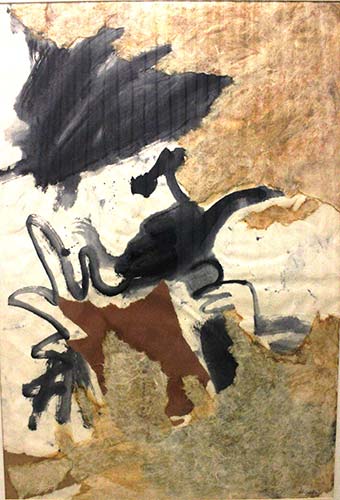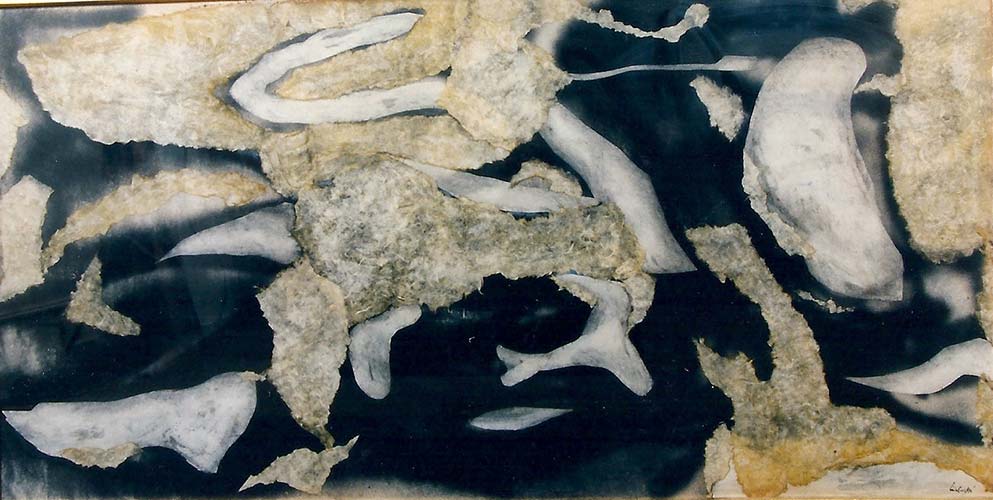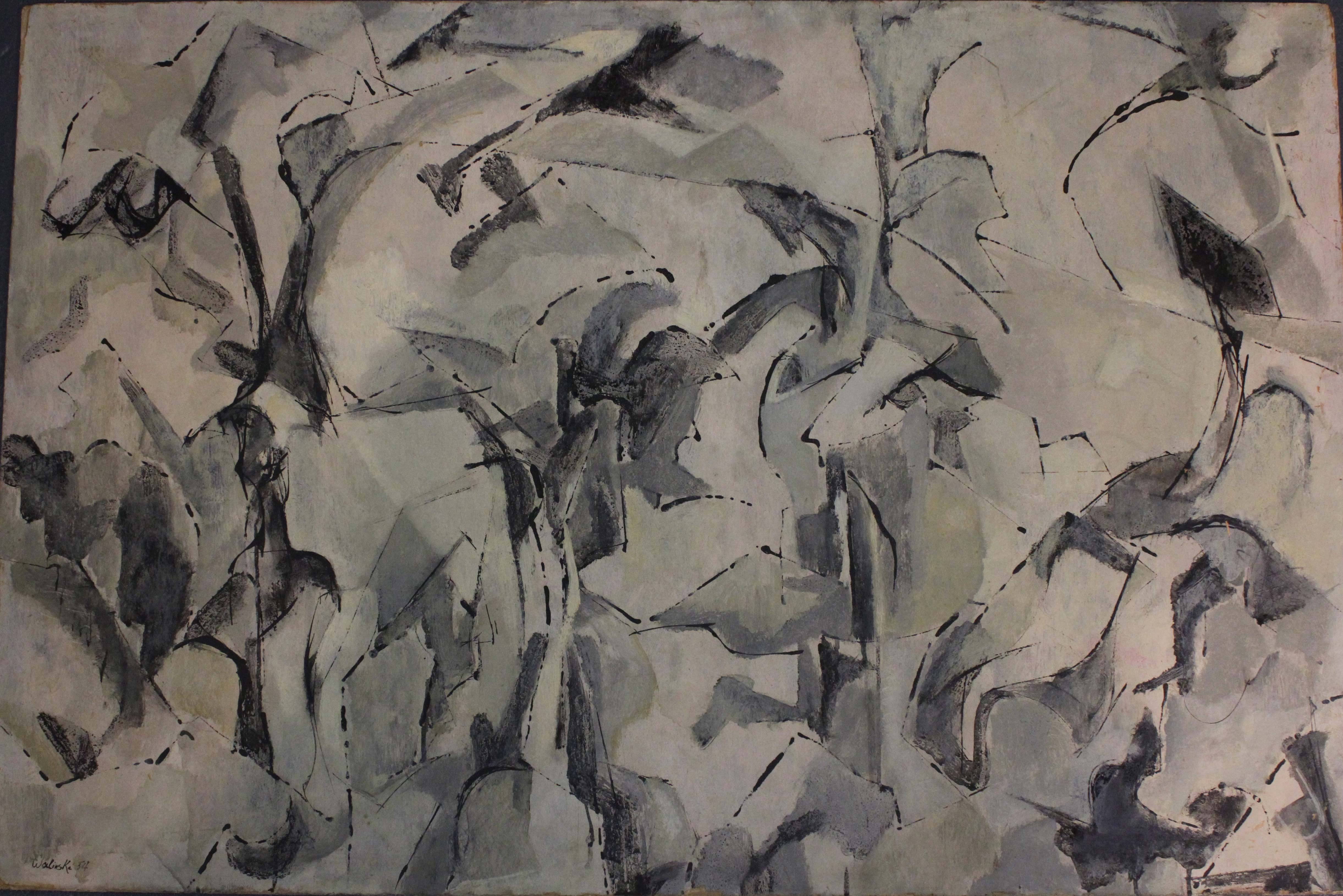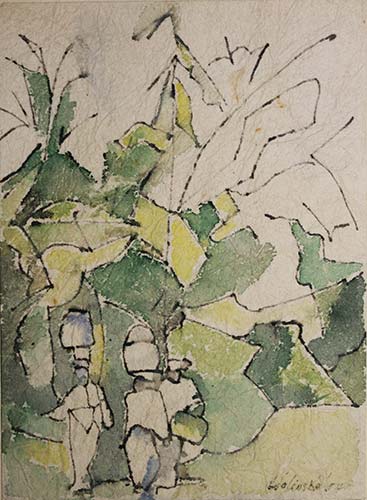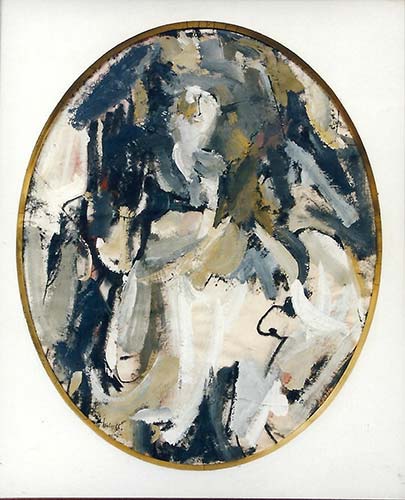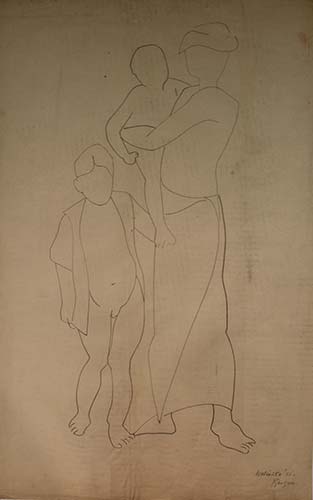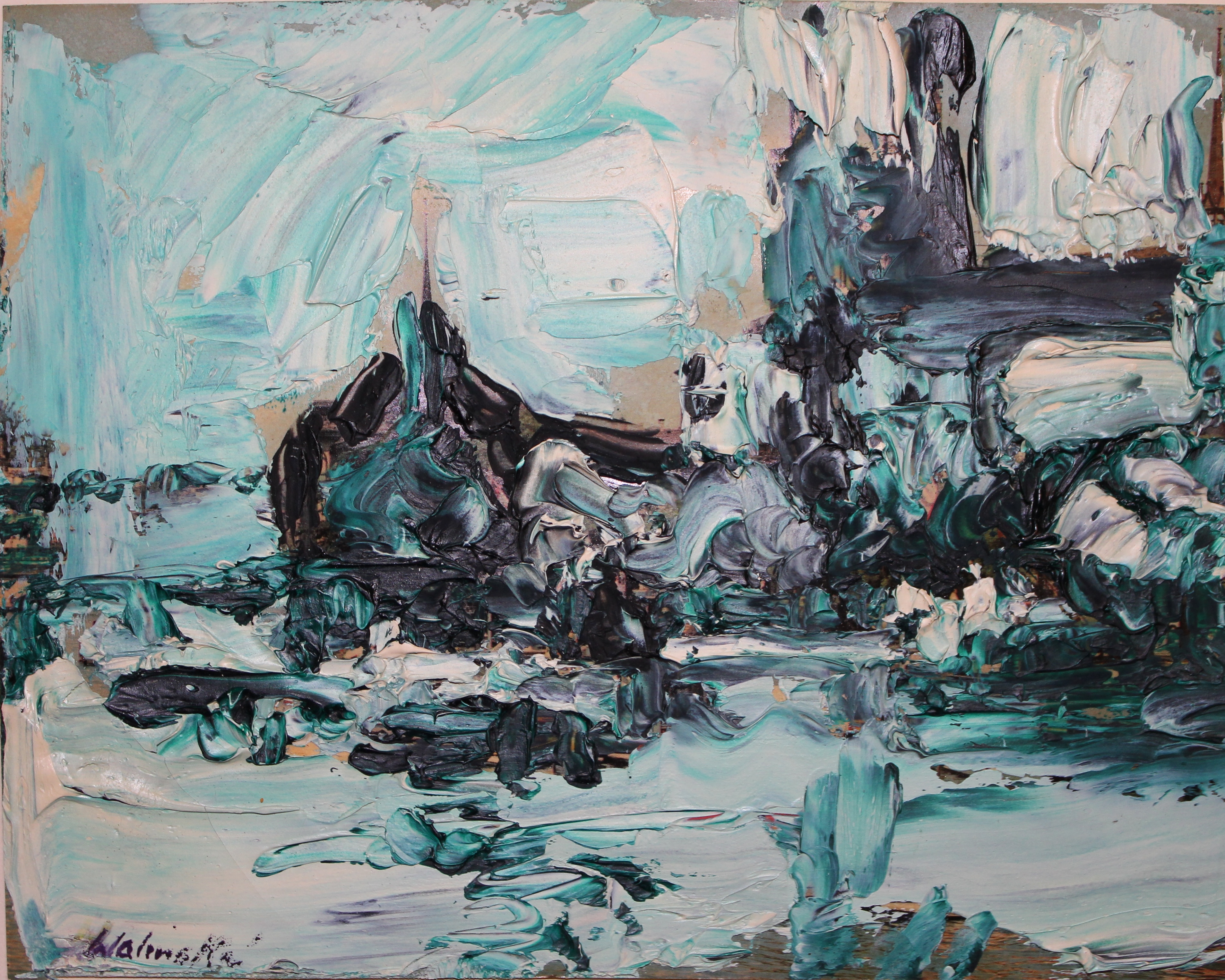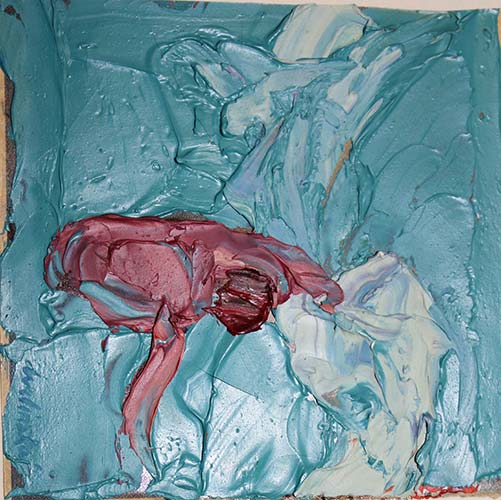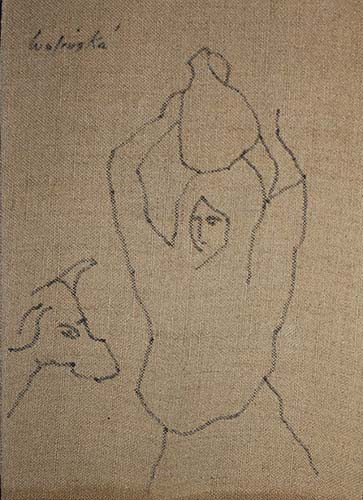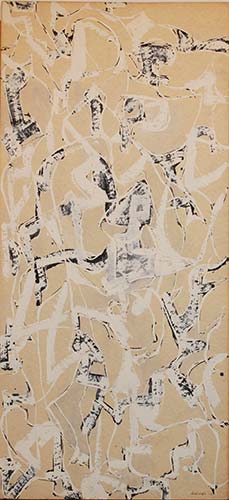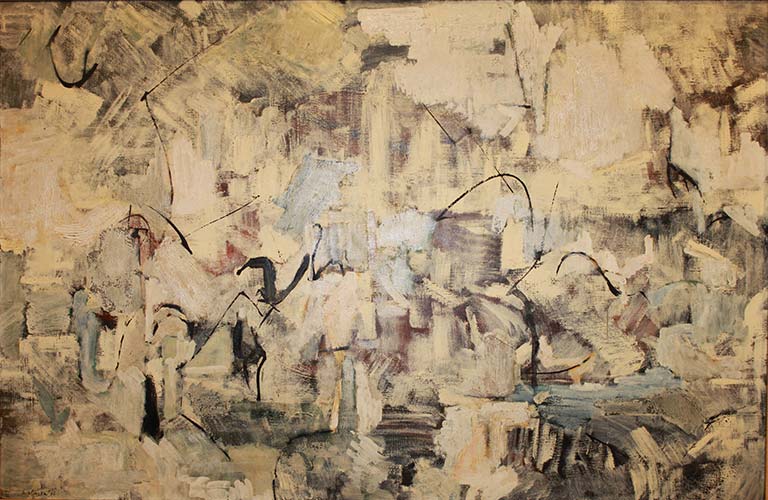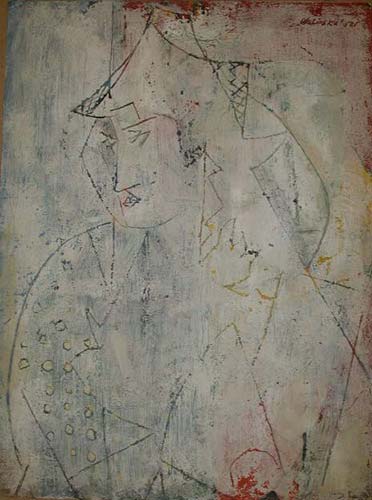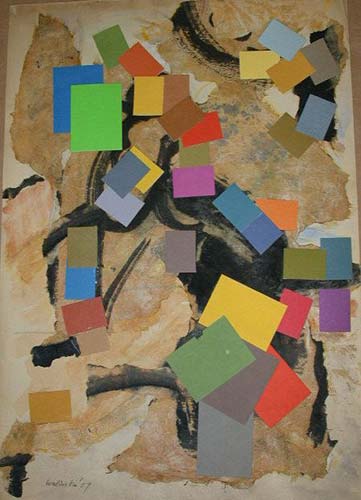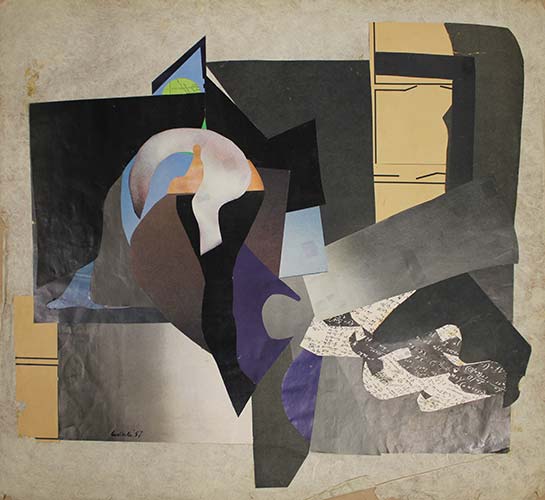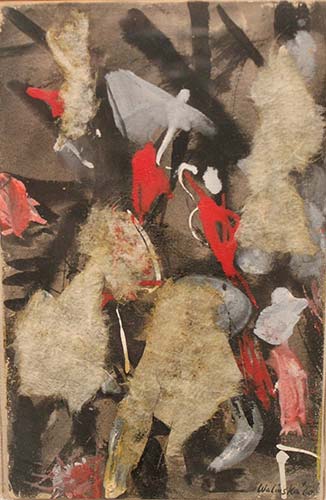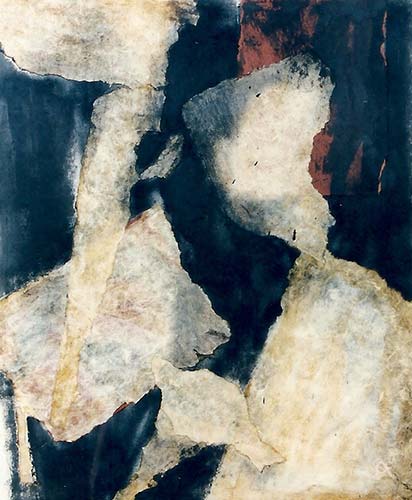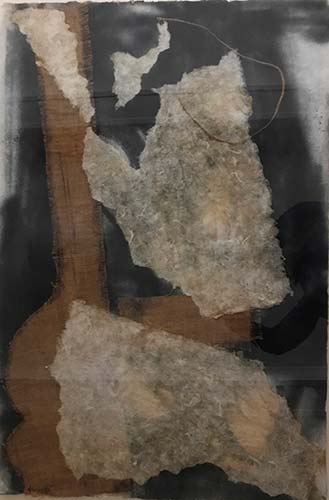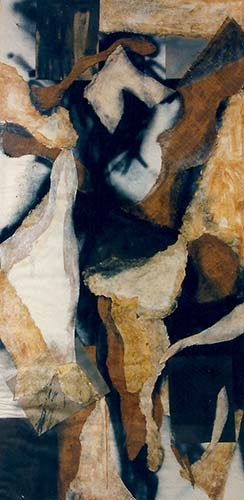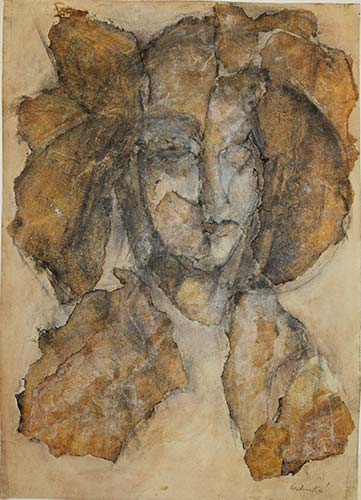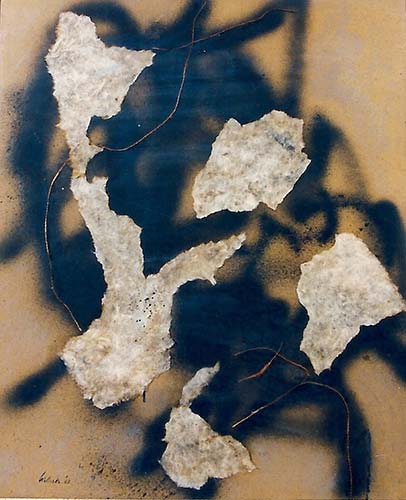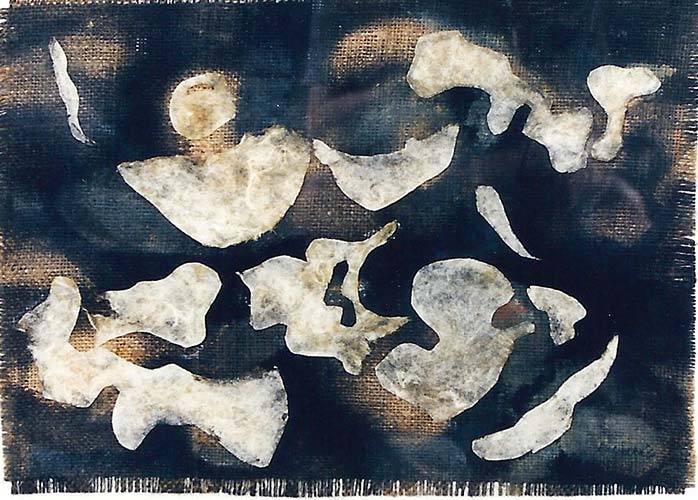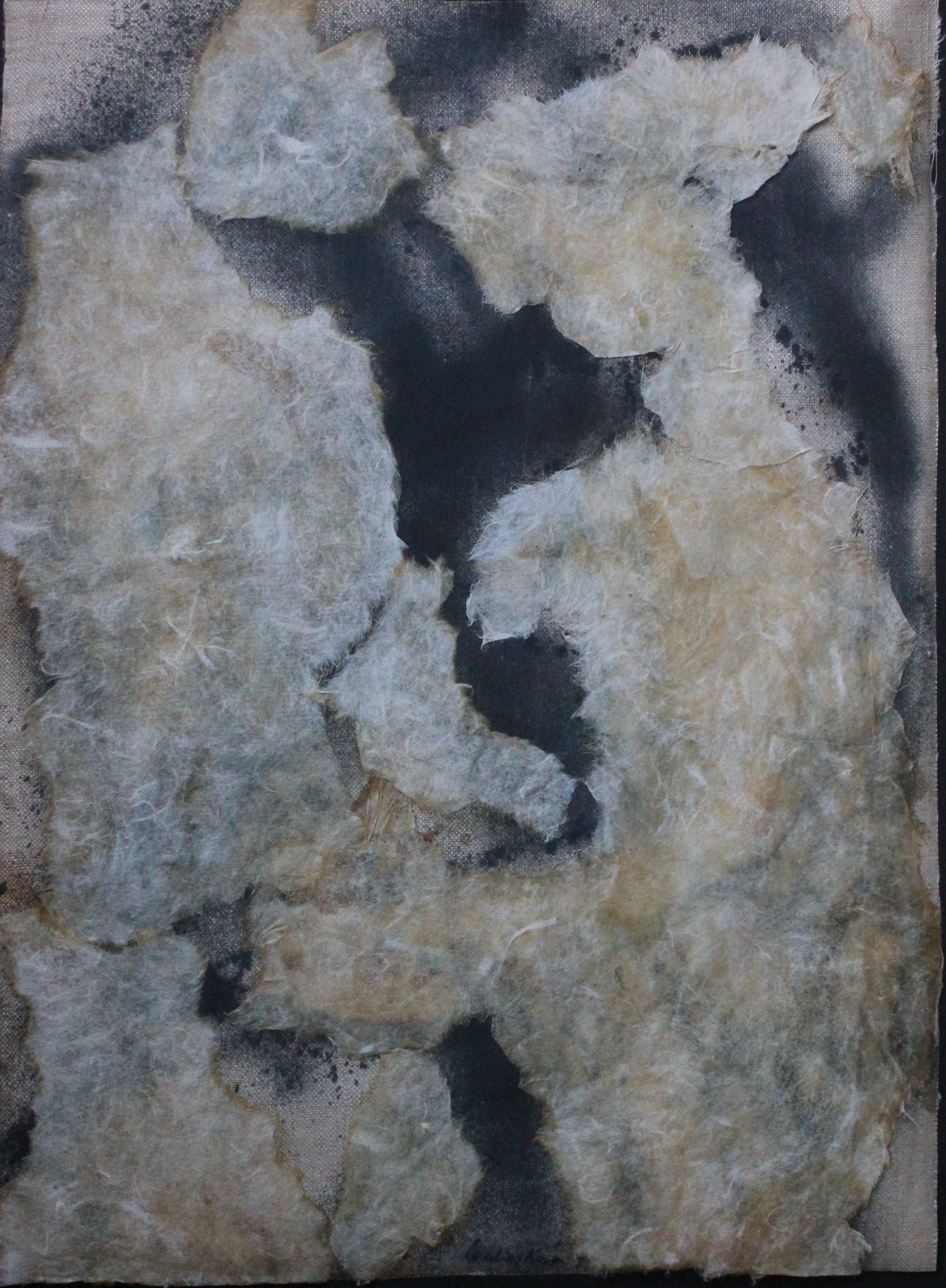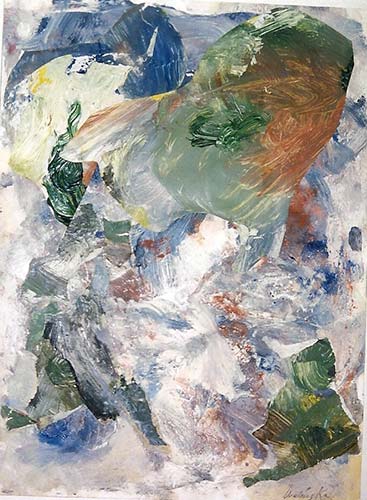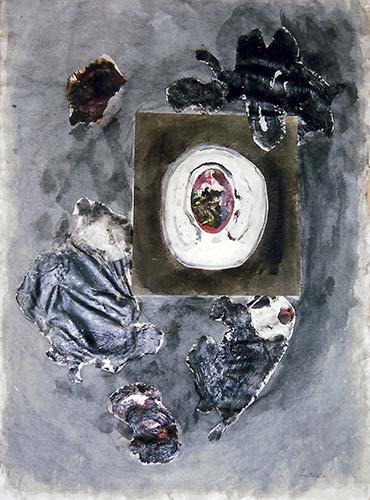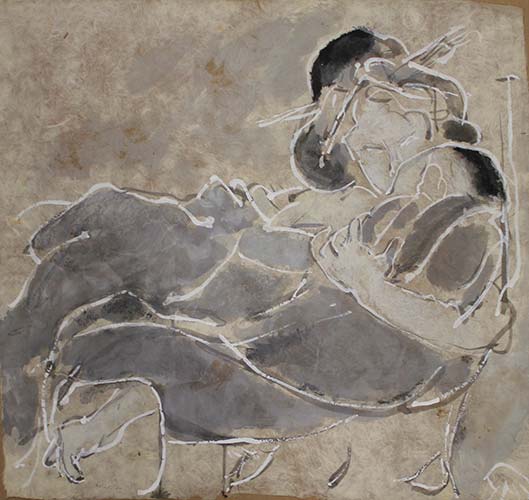West Meets East
Around the World, 1954-1955
From November 1954 to May 1955, Anna Walinska took a trip around the world. Traveling alone, the journey included a four-month sojourn in Burma, where her brother Louis Walinsky was serving as economic advisor to Prime Minister U Nu.
In Burma, Walinska’s work was inspired by the warmth of its people and the landscape of a country with incredible sunsets, magical pagodas and colorful marketplaces. In her diary of the trip, now in the collection of the Smithsonian Archives of American Art, she wrote: “It was the end of so much that was precious and very beautiful, and I was very fortunate that I came at a time where even though the West had encroached with the clothes and certain values, still there was a mixture of the two, a juxtaposition which was fascinating.”
She made many portraits in Burma, including several of U Nu, one of which became part of the collection at the Asia Society in New York City. She worked in a formal dress and high heels, and noted: “To have had the unique experience of painting a world leader, who besides being a man of action has the rare qualities of a truly good soul, the gentleness and smiling peace of his good nature, his kindness which is evident, and coming to know him has been for me a great privilege.” Presenting the finished canvas to U Nu, she said, was “one of the most memorable days of my stay.” She wrote of saying to him, “Mr. Prime Minister, I have sought in my interpretation of your character to convey the qualities of a man of action plus those of a man given to deep reflection and meditation. That is why I sought an informal, relaxed and characteristic pose and mood, rather than the more formalistic approach. I want to say to you how deeply grateful I am that my path in life has led me to your country which I have come to love as well as your people. I carry with me unforgettable memories which will always remain in my heart.”
Other persons with whom Walinska spent time in Burma included journalists Joseph Alsop and Max Lerner; Israeli Ambassador to Burma David Hacohen and his wife, author Bracha Habas; Lady Patricia Gore Booth, wife of the British Ambassador to Burma and a life-long supporter of the cause of a free democratic Burma; Mrs. Oswald Lord, U.S. delegate to the UN; and the Burmese political leaders and artists – U Thant, secretary to the Prime Minister (later Secretary General of the UN); U Hla Maung, Burmese Ambassador to China; Bo Letya (Commander of the Burmese Defense Army under Bogyoke Aung San) and Bo Setkya (both founding members of the Thirty Comrades, fighters for their country’s independence from the British); and painters Ngwe Gaing, Hla Shein and M. Tin Aye.
While in Burma, she instructed local craftsmen on the art of building an easel and stretching canvas. The Burmese artists took her out to paint en plein air, and she shared with them her knowledge of what was happening in the world of art. Hla Shein wrote of her influence: “The vast majority of artists in Burma follow the realistic approach. They have now for the first time seen and heard a modernist, who appears entirely different from the only brand they had known. They have also had an opportunity to see her recent work and were agreeably surprised to realize that abstraction can excite emotions in the same way as realism. The abstract drawing of the Prime Minister at prayer was unanimously regarded as a very satisfying study interpreting devotion by a few very graceful lines. Those artists who were fortunate enough to have met her could not quarrel with her view that exploration and adventure are the spice of art and that the urge to create should be fostered.”
Walinska made personal artistic discoveries as well. She fell in love with the Shan paper handmade in the northeast province of Burma, which she used in particular for a series of collages that were first exhibited in 1961 at the Monede Gallery on Madison Avenue in New York. She was also given some aerial geological photos of the country, which she noted were “wonderful subjects for abstract paintings.”
At the time of her departure for Burma, Walinska may have been on the verge of being “discovered” – she had just received a letter from Guggenheim Museum director James Johnson Sweeney saying that he was impressed with her work and wanted to visit her studio. She called this “the greatest moral encouragement I have ever had.” But she was always driven by the desire to explore and express herself through art, and there is no doubt that she would never have traded her voyage for commercial success. “I lived a full year in those four months,” Walinska said, explaining the impact of her time in Burma. “It was a remarkable experience for me socially as well as culturally. I came back from Rangoon very much enriched. I painted for years under the influence of Burma.”
The six-month trip began in New York City and continued on five different airlines to: Honolulu, Tokyo, Hong Kong, Bangkok, Burma, New Delhi, Karachi, Cyprus, Israel, Istanbul, Athens, Rome, Perugia, Florence, Venice, Pompei, Naples, Sorrento, Capri, Nice, Barcelona, Madrid, Toledo, Lisbon, and finally to Bermuda (where she noted that the single room rate at the Elbow Beach Surf Club ran from $14-25). She wrote of her custom for each flight: “I sang a song of prayer when I got on a plane and sang a song of praise to the infinite when I landed: I am here to continue my journey.”
